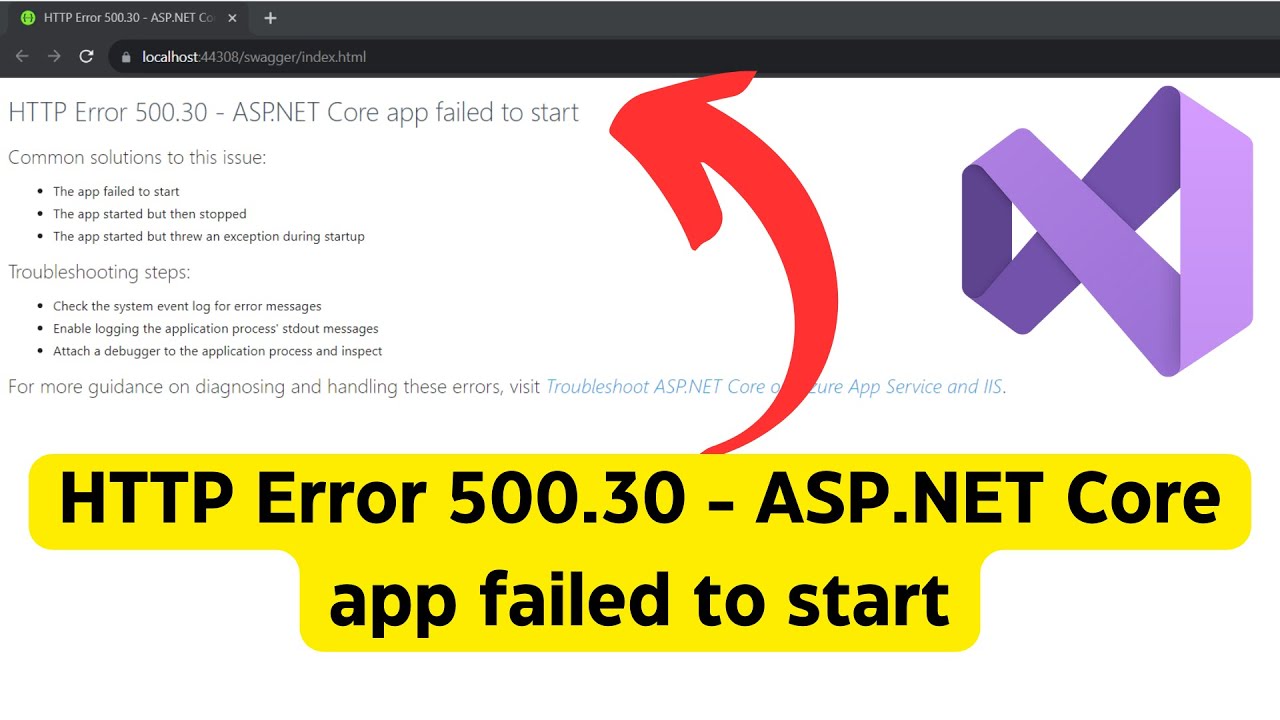
http error 500.30 - asp.net core app failed to start
When working with ASP.NET Core applications, developers may encounter the notorious HTTP Error 500.30 message. This error signifies that the ASP.NET Core app failed to start correctly on the server, often causing frustration and confusion. In this comprehensive guide, we will explore the common causes of this error, and provide detailed solutions to help developers and IT professionals troubleshoot and resolve it.
Understanding HTTP Error 500.30
The 500.30 error is an HTTP status code that indicates a server-side problem. Specifically, it means that the ASP.NET Core application failed during the startup process. This error is particularly problematic because it does not provide detailed information about the exact cause, making it difficult to pinpoint the underlying issue without further investigation.
Common Causes of HTTP Error 500.30
1. Misconfigured Web Host Environment
One of the most frequent causes of the HTTP Error 500.30 is a misconfigured web host environment. If the hosting environment for the ASP.NET Core application is not properly set up, the app may fail to launch. This can be due to incorrect environment variables, improper configuration files, or missing dependencies.
2. Application Runtime Issues
Another common cause of the 500.30 error is a runtime issue within the application. ASP.NET Core apps rely on various runtime components to function properly. If there is an issue with the .NET Core runtime, such as a version mismatch, the application will fail to start, resulting in this error.
3. Unhandled Exceptions in Code
An unhandled exception in the code during the startup process can also lead to an HTTP Error 500.30. This can occur if there are bugs, logic errors, or missing dependencies that are not handled properly in the code. As a result, the app fails to initialize correctly.
4. Missing Dependencies or NuGet Packages
ASP.NET Core applications rely on various NuGet packages and other dependencies. If one or more dependencies are missing or incorrectly installed, the app will not be able to start, leading to the 500.30 error.
5. Incorrect Startup Configuration
The Startup.cs file in an ASP.NET Core project contains essential configuration settings for the application. If there is an error in the Startup.cs file, such as incorrect middleware configuration or faulty services registration, it can result in the app failing to start.
6. Server Permissions and Access Control Issues
Server permissions play a critical role in the smooth functioning of ASP.NET Core applications. If the app does not have the correct permissions to access files or directories on the server, it may fail to start, triggering the HTTP Error 500.30.
How to Troubleshoot and Fix HTTP Error 500.30
1. Check the Application Logs
The first step in troubleshooting the 500.30 error is to check the application logs. ASP.NET Core apps generate detailed logs that provide insights into what went wrong during startup. Review the logs to identify any unhandled exceptions, missing dependencies, or configuration errors.
To view the logs, you can:
- Use the dotnet run command to start the application locally and observe the output.
- Check the log files in the logs directory on the server.
- Use cloud-based monitoring tools if you’re hosting the app on platforms like Azure or AWS.
2. Verify the Hosting Environment Configuration
Ensure that the hosting environment is properly configured. This includes:
- Checking the environment variables and making sure they are correctly set.
- Verifying the appsettings.json or appsettings.Development.json files to ensure they contain the correct configuration values.
- Ensuring that all required dependencies are installed on the server.
3. Check the .NET Core Runtime Version
Make sure that the .NET Core runtime version installed on the server matches the version required by your application. You can check the required runtime version in the csproj file of your project. If the server does not have the correct runtime version, install it or update it to the required version.
4. Investigate the Startup.cs File
Review the Startup.cs file in your ASP.NET Core project. Look for any issues in the ConfigureServices or Configure methods. Common mistakes include:
- Forgetting to register essential services in the ConfigureServices method.
- Incorrectly configuring middleware components in the Configure method.
- Missing or misconfigured dependency injection settings.
5. Check for Unhandled Exceptions in Code
Examine the application code for any unhandled exceptions that may be occurring during the startup process. To catch these exceptions, you can:
- Use try-catch blocks in the Startup.cs file to handle potential issues.
- Add logging to capture detailed information about exceptions.
- Use tools like Application Insights to monitor exceptions in production environments.
6. Ensure Proper Server Permissions
Check the server’s file system permissions to ensure that the ASP.NET Core app has access to the required files and directories. This includes:
- Ensuring that the app has read and write access to configuration files and logs.
- Verifying that the app has the necessary permissions to access any databases or external services.
7. Reinstall Missing Dependencies
If the issue is related to missing NuGet packages or other dependencies, reinstalling them may resolve the error. You can:
- Run the dotnet restore command to restore all required packages.
- Manually verify that all necessary packages are included in the project.
8. Test Locally Before Deployment
Before deploying your application to the server, test it thoroughly on your local machine. Use the dotnet run command to ensure that the app starts without any issues. This can help catch configuration or dependency problems early.
Preventing HTTP Error 500.30 in the Future
While resolving the HTTP Error 500.30 is crucial, it’s equally important to take steps to prevent it from occurring in the future. Here are some best practices to follow:
- Regularly update the .NET Core runtime on your servers to ensure compatibility with your application.
- Implement robust logging and monitoring systems to quickly identify issues in production environments.
- Thoroughly test your application in multiple environments (development, staging, production) before deploying updates.
- Use dependency injection and service registration practices correctly to ensure that all required services are available during startup.
- Regularly review and update permissions on the server to avoid access-related issues.
By following these practices, you can minimize the chances of encountering the HTTP Error 500.30 in your ASP.NET Core applications.
Conclusion
Encountering HTTP Error 500.30 – ASP.NET Core app failed to start can be frustrating, but it is a solvable problem when approached systematically. By understanding the most common causes, such as misconfigured hosting environments, missing dependencies, runtime mismatches, and errors in the Startup.cs file, developers can efficiently diagnose and resolve the issue. Through careful examination of logs, verification of configurations, and ensuring that all necessary packages and permissions are in place, this error can be eliminated.
Preventative measures, such as regular testing, maintaining up-to-date server environments, and implementing proper logging and monitoring, are essential to avoid similar issues in the future. By following these best practices, developers can ensure the smooth startup of their ASP.NET Core applications and avoid downtime due to this common server-side error.






